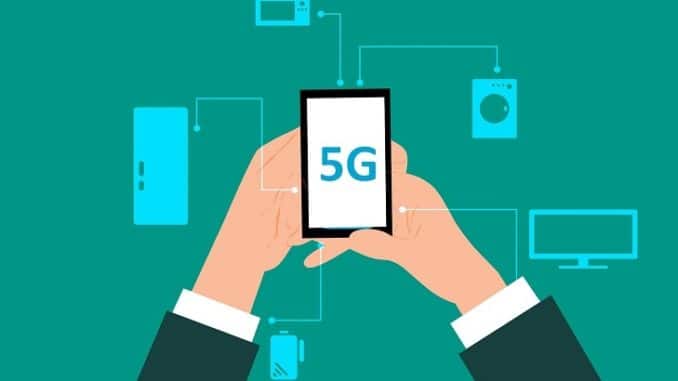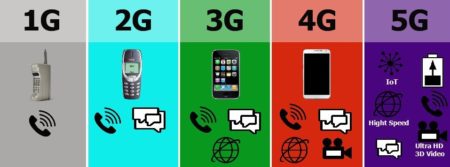
5G communication is better than 4G communication. 5G refers to the fifth generation communication technology, which has the characteristics of continuous wide area coverage, hotspot high capacity, low power consumption and large connection, low latency and high reliability. These are the relative 5G communication. The most significant advancement in 4G communications.
Advances in 5G communication versus 4G communication
5G refers to the fifth-generation communication technology, featuring continuous wide-area coverage, hot-spot high-capacity, low-power large connections, low latency, and high reliability, which are the most significant advances in 5G communication over 4G communication. Hotspot high capacity refers to providing users with 1Gbps user experience rate and 10Gbps peak rate in densely populated areas; in the traffic hotspot area, it can achieve traffic density of 10-100Tbps per square kilometer. That is to say, in a highly populated area, there is no longer any need to worry about the network speed drop or network congestion caused by too many 4G users using the network at the same time.
The low-power, large-scale connection provides support for over 100 million network connections and meets the 1 million/km2 connection number density specification. This function is mainly for application scenarios targeting sensing and data collection for smart cities, environmental monitoring, intelligent agriculture, and forest fire prevention. Low latency and high reliability refer to providing users with millisecond-level end-to-end delay and nearly 100% service reliability guarantee. This is mainly for special application needs in industries such as autonomous driving and industrial 4.0. It can be seen that compared to 4G communication, 5G communication can provide a wider coverage of signals, and the Internet is faster, the traffic density is greater, and it will penetrate into the Internet of Things. In other words, it is the Internet of Everything.

What 5G key technologies China has mastered?
As the 5G communication standard is still in the process of formulation, many technologies are also developing, and there are controversies about whether certain technologies will become the key technologies for 5G communication. This is a brief introduction to some key technologies that are more promising in the industry.
The first is multiple access. Multi-access technology refers to the problem of solving the problem of multiple users communicating with the base station at the same time. How to share resources? In the 5G standard battle, multiple access is a key point of competition. The popular opinion is NOMA, but there are also scholars. Different views. Followed by coding. The code consists of a long code and a shortcode. In the past year, the Chinese manufacturer (Huawei) mainly promoted the competition between the long-code and short-code schemes of the eMBB scene, which was mainly promoted by the Chinese manufacturer (Huawei) and Turbo2.0, which is mainly promoted by Europe, and LDPC, which is mainly promoted by the United States. US companies have captured the long code and short code encoding channels of the eMBB scene (used to enhance the ability of data to resist various interferences when transmitting in the channel). Chinese enterprises have obtained the control channel of the eMBB scene shortcode (mainly used for transmission command operations). Subordinate network equipment).
Although in the game of eMBB scene coding technology, China’s main push of Polar is inferior to the US’s main LDPC, it is still stronger than the unobtained Turbo2.0.
Finally, there is multi-antenna technology. Multi-antenna is a technology to increase capacity. Now the industry is more optimistic about MIMO technology. Massive MIMO technology can not only reduce transmit power, reduce intra-cell and inter-cell interference, but also achieve spectrum without increasing spectrum resources. Efficiency and power efficiency are increased by an order of magnitude based on 4G. In addition, RF modulation and demodulation technology and soft frequency reuse technology are also expected to become key technologies for 5G communication. In particular, heavyweight patents for soft frequency reuse are in the hands of Huawei.

In general, China has made important breakthroughs in a number of key 5G technologies, and some technologies have entered the test verification phase. Recently, the first version of Spreadtrum’s prototype Pilot V1 using FPGA has completed the docking experiment with Huawei. The second version of the prototype will increase the bandwidth to 100M and will be connected to the system manufacturer in the second half of 2017.